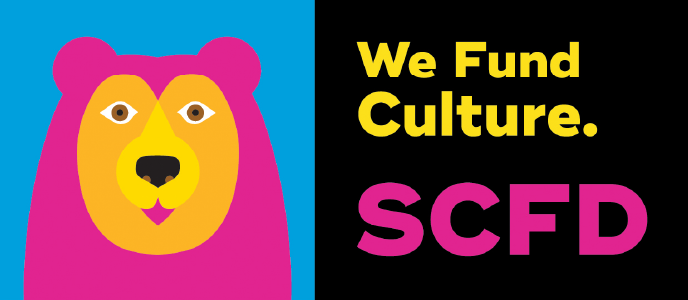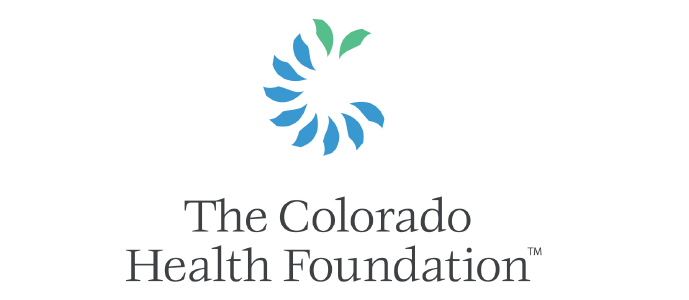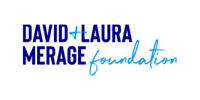In the summer of 2023, RMCAD students interviewed our 2022-2024 Resident Artists in their studios. Their video interview of Jasmine Holmes showcases her background, inspirations, and her advice for other emerging artists.
Jasmine Holmes, is a Southern artist who creates drawings through a variety of media. She received her BFA from the University of West Florida, and her MFA from Colorado State University.
Her works are meant to offer discourse on consumerist society and its appetite for devouring Black culture. She uses depictions of staple foods from her Creole upbringing, hair culture, music and textiles to showcase the eternal connections she keeps to her ancestral home.
Her work celebrates the many colorful aspects of Black American culture while creating conservation on the multifaceted way it's consumed and regurgitated amongst the populace.
“Contemporary art to me means trying new things, not doing the same thing over and over again. I think traditions are meant to be broken in ways, especially in art, because it’s meant to be creative and you should be as creative as possible.”
Watch RMCAD Interview Video with Resident Artist Jazz Holmes Now
VIDEO TRANSCRIPTION:
“I'm Jazz Holmes. I grew up in Northern Florida, but I moved around the South a lot. And now I am in Colorado. I like to draw the figure, the human body, because I feel like it's the most expressive part of ourselves.
“It's an entire body, and you can say it a lot with the position and where they are. I really enjoy talking about my own Creole culture and my love of food and just color and everything that I was taught to be ashamed of when I was younger. I tried to bring the beauty in that kind of culture that has been erased or trying to be erased.
“It's a long process. I do a lot of research first where I will usually find something inspiring and then I need to know more about that, know more about the history. A lot of my work is about my ancestry and me finding these new pathways that I never knew existed because my ancestry has been kept away from me for a long time.
“So I'm learning more about myself at the same time. So I'll do a lot of research into that through my family or through literature. And then as I'm going, it's like, ‘Geez,’ these images pop in my head, and I'll start to draw something and then it comes together, and then I just let it happen after that. So that's the process. A lot of reading, a lot of talking to people and soul searching, too.
“It depends. Honestly, if I'm doing a really gestural figurative work, like these pieces over here, they don't take me too long. They take me about maybe a week. I usually do them in one session. This is the only one I have in here right now, but someone dancing, I'll do it in one session and then I'll work on it throughout the week.
“These pieces behind me, these really detail oriented pieces that take me half a year sometimes. I've been working on this since last September, so yeah, it took me a long time. And I'm in here every day, usually from nine to five. So I work six to seven hours a day on it. Sometimes the weekends, too. It's just a lot of hours put behind it. But all those details, they take a long time.
“The best advice I've been given is from my old drilling mentor growing up, he always told me that your artwork did not think of your artwork as too precious. And to not think of every piece as a masterpiece.
“That stops you from enjoying your work, it stops you from trying to, you make something and you fail and then you think, ‘Oh, I'm not good at this.’ Really, it's just a step in the right direction. You have to keep doing it, and failure is a good thing.
“So that's my advice that I used to say to my students all the time. Just don't stress out about it. Just have fun. If you don't like it, it's okay. Move on.
“Yeah, that's definitely the best advice, and that's the advice that I give to other artists too, is something about being young, especially in college, when you have exams and you have critiques, you want it to be perfect and you don't want to hear anything bad, but that's okay. Not everybody's going to like it for it. And most of the time it's just not going to be a masterpiece. It might be to you, but that's just... Keep making, try new things, experiment especially, and just have fun. It's supposed to be enjoyable. That's my best advice, I would say.
“…I graduated two years ago from grad school. My experience in education was odd. Coming from the south, being a black person from the south, I was treated in a way that a lot of black artists are where we're expected to only talk about our pains. So that's all I did for a long time.
“And it wasn't until I started researching my own ancestry, realizing, ‘Oh, I'm not just a big ball of pain. My whole ancestry isn't just slavery, it's the beauty of food and ingredients and culture that I grew up with.’ Farming and things like that.
“I never thought about it as important. And it wasn't until I finally woke up one day and was like, ‘This is the most important aspect of my life. What am I doing?’ And I started to focus on that and happiness and creativity and just the beauty of my culture. That's when I had an 'aha moment of like, ‘I want to make stuff like this.’
“And since then, I have too many ideas all at once, and I want to do so many different things all at the same time because I'm excited for the first time. Instead of just trying to get a piece to say something about my pain that I can't describe. So that's my aha moment when I realized it's about me and my history and my family and just my people in general.
“I grew up in Florida, so northern Florida, 15 minutes away. so basically all family's from parts of the south, Louisiana, Georgia, North Carolina. And growing up in those states, you're actually not really allowed to learn about black culture. It actually, as of yesterday, became illegal to teach black history in Florida, and that's the environment that I grew up with. So I had no idea who I was or where I came from.
“And the more I researched, the more I realized why I was eating certain foods and where they came from. And noticing that I am Creole because I had grown up eating etouffee and jambalaya and gumbo, and half of my family speaks French, and I didn't know why.
“And just looking into that amazing culture, I really wanted to represent that, how unique it is and how just colorful it is. I don't know if y'all have ever been to New Orleans, but New Orleans is just this loud, music centered place, the best food and the kindest people. I love that type of party atmosphere where it's just a big hug. It's not really hectic, it's just calming. I wanted to find ways to express that southern aspect to people that isn't shrouded in death pain instead of happiness and pride.
“So that's what I focus on, my Creole heritage, for the most part. But also my West Indian heritage. My dad is West Indian, and so I was eating plantains and being beef patties and jerk chicken at the same time as everything like this. So I have a really rich history that I just never had the chance to feel like I could care about. And that's what those aspects of my culture I try to represent, give to everybody.
“I honestly haven't met many Creole artists. I've met a lot of black southern artists that I'm very inspired by—Kara Walker, Sonya Clark…she's West Indian, and she came to CSU actually before, I didn't even know who she was. I met her and she changed my life.
“And just a lot of southern black artists, I really love that talk about different things. A lot of them do talk about pain because there is that push of that's ‘real black art,’ and I haven't met a lot of them that actually talk about joy or happiness. I had to make that decision for myself.
“And I use them as inspiration on just how they talk about art and how they talk about what they're trying to do, what they're trying to convey. And I take that and let it inspire me to try to be that person that is that pillar of happiness for other people, especially black folk, that they feel like they don't have that in fine arts.
“Like I said earlier, I started out only drawing anime and cartoons. So when I first started, my work was really anime, like big eyes, like you would say in a manga. It didn't really have a lot of substance to it behind that. It was just like I could draw people really well.
“As I kept going professionally, I started to add color because I hated color, too. I struggled with that for a while until I realized I should just use color naturally. Just let it come to me and not have a color scheme, just see what happens. The more I did that, the more comfortable I got using only color, and now I just completely changed to where it's the most colorful it could possibly be.
“I wish I could show you some of my old art, just black and white and no background, just a person floating in air. But now I've incorporated backgrounds and surrealism into my work too, where it's not a landscape that would exist naturally. It's more of a dream scape in my mind that I feel like exists in a different plane somewhere. And that's how my work has changed a lot.
“Contemporary art, to me, means breaking the mold. Fine arts, as much as art likes to think it's really accepting, it's not. It's starting to change. I think a lot of young people like yourself are changing it, which is great. That's how it should be.
“Contemporary art to me means trying new things, not doing the same thing over and over again. I think traditions are meant to be broken in ways, especially in art, because it's meant to be creative and you should be as creative as possible. Talking about as many things.
“Contemporary art to me is also a type of protesting. So I truly feel like the original artists were anarchists people who just didn't think about society or try to change society for the better and advocate for their fellow people.
“That's how I see contemporary art. It should be saying something, it should be connected to yourself in some way. It should be inspiring folks around you and helping society in a certain way. That's what I hope my artist is doing, at least. So all artists really want to do that, too.”






